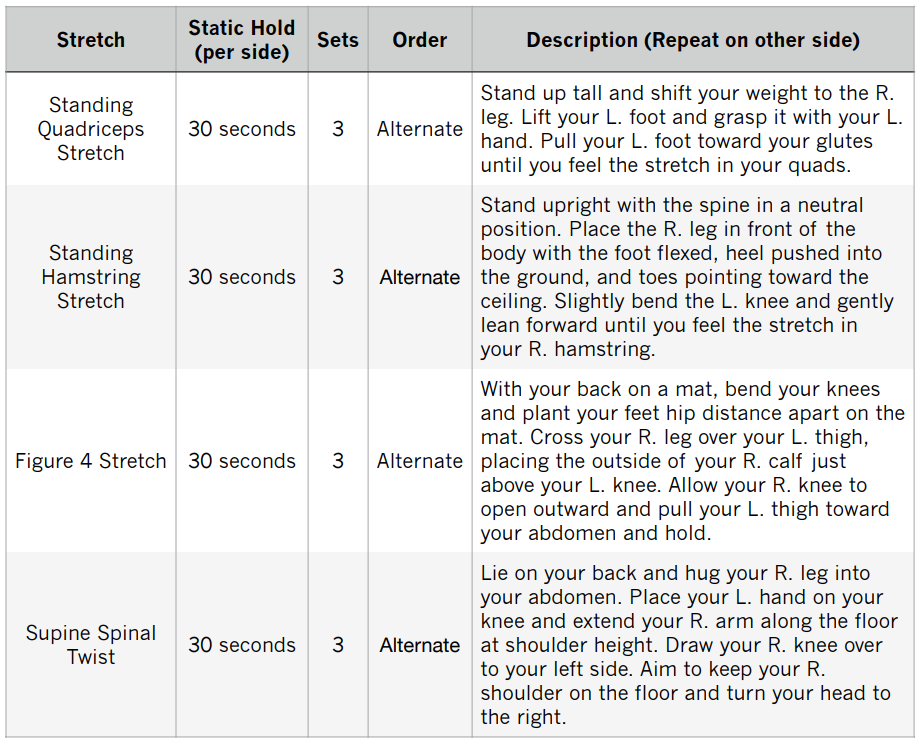Long-Term Flexibility, Breathing For Resistance Training & Evaluating Relationships With End-Of-Life Clarity
Happy Thursday!
Here is your weekly dose of Longevity Minded, three things I’m exploring in the realms of longevity and simple living this week.
But first, a quick story to start your day with a laugh…
As I was leaving a rural Colombian town for a hike last week, two dogs came out of nowhere and started barking at me.
Eventually, the barking subsided and they carried on walking down the street.
After 3km they were still with me, a fluke I thought.
Hours went by and the dogs continued to follow me for the entire 22km (4.5 hour) hike, terrorizing cows we passed, barking at other hikers, and waiting for me when they got too far ahead.
To complement the gorgeous hike, these two dogs created an unexpected memory I certainly won’t forget…
Now, let’s dive in.
🫀 Live Longer
Static Stretching: The Most Effective Way To Increase Long-Term Flexibility
In Episode #67 of the Huberman Lab podcast, Stanford neuroscientist Dr. Andrew Huberman outlined a static stretching protocol.
Here’s the rundown:
Why should you stretch?
Not only does stretching feel amazing (once you’re accustomed to it) but there are a ton of benefits to increasing flexibility:
Reduced pain
Improved posture
Decreased injury risk
Improved balance/stability
Alleviated feelings of “tightness”
Smoother gait and elevated physical performance
Reduced inflammation — some data in animal models suggest it may even reduce the risk of cancer
Stretching, like meditation, is also a great tool to calm your mind and reduce stress, irritability, and anxiety.
So, what’s the most effective way to integrate stretching into your weekly routine?
Static Stretching 101
Dynamic and ballistic stretching, which involve swinging limbs and using momentum, are helpful before engaging in performance-based activities and sports
But our focus here is static stretching, which is the most effective method of increasing long-term flexibility.
Key Considerations For Static Stretching
Hold static stretches for at least 30 seconds. Static means that you generate no momentum to move into or through the stretch.
Stretching frequency is critical to improving long-term flexibility. Stretch 5 times per week with a total stretching time of 5 minutes per muscle group per week.
Hitting the target of 5 minutes per muscle group per week can also be achieved by holding each stretch longer (i.e., 60 seconds instead of 30 seconds). This decreases the number of times you will need to stretch per week (every other day as opposed to 5x per week).
However, do NOT stretch just 1-2 times per week and expect to make big progress. It’s better to do a little bit every or every other day.
Microstretching (defined as 30-40% intensity where 100% would be slightly painful) is effective at improving flexibility. So, you do not need to push yourself to a point where you feel pain.
The important takeaway is that to increase flexibility consistency and frequency beat duration and intensity.
The Static Stretching Protocol
Perform 2-4 sets of 30-second static holds per muscle group, 5 days per week.

💪 Feel Healthier
Two Breathing Techniques To Optimize Your Resistance Training And Enhance Your Recovery
As we covered in a previous article, your breath is a powerful tool to conquer fear, control stress and anxiety, boost performance, and gain control over your physical and mental state.
And as Dr. Andrew Galpin, Professor of Kinesiology at California State University, Fullerton, and leading expert on how to increase strength, hypertrophy, and endurance, discussed on the Huberman Lab podcast, our breath’s utility extends to resistance training for both strength and hypertrophy (muscle growth).
Here’s how you can optimize your resistance training by using two breathing techniques:
During Resistance Training
In between sets, stop scrolling your phone and instead lower your heart rate and prepare your mind and body for the next set by using the physiological sigh.
Take 2 full inhales through your nose (the first being larger than the second) followed by one full exhale through the mouth in which you release all the air in your lungs.
Post Resistance Training
To relax your mind and body, aid muscle recovery, and “downshift” your nervous system breath deliberately slowly (inhales and exhales) for 3-5 minutes after your workout.
If you don’t have time to sit or lie down for this, just do it in the shower or car.
🧠 Cultivate Purpose
The Deathbed Test: Evaluate Relationships With End-Of-Life Clarity (Before It’s Too Late To Change Anything)
In the past, I’ve written about deathbed decision making.
It is the idea that by picturing ourselves on our deathbeds, we gain access to a level of zoomed-out mental clarity that we can’t see while submerged in the day-to-day rush.
This perspective enables us to identify what’s truly important—something we aren’t good at while rushing through our daily lives—so we can make wise decisions in the present that we will cherish on our deathbeds.
One of the most practical applications of this mental model, as Tim Urban details in Tribe of Mentors by Tim Ferriss, is in analyzing our personal relationships.
Sadly, the most important relationships tend to be the first thing we deprioritize when we get busy (a decision sure to generate regret later in life).
Tim lays out three questions to identify and prioritize the most important people in our lives:
Find And Cherish Your People With 3 Key Questions
To make sure you’re dedicating time to the right people:
“Is this someone I might be thinking about when I’m on my deathbed?”
To make sure you’re spending enough high-quality time with the people you identified above:
“If I were on my deathbed today, would I be happy with the amount of time I spent with this person?”
Or framed differently: “If X person were on their deathbed today, how would I feel about the amount of quality time I’ve spent with them?”
When you’re on your deathbed, it’s too late to change anything.
So, the goal is to live a life that you wouldn’t trade another lifetime for on your deathbed. By accessing end-of-life clarity now, you can make the decisions that your future self will smile and swell with joy at.
A Quick Note on Execution
This sounds great in theory. But it’s all useless if you don’t master one skill:
The ability to identify the nonessential and say “No” to hundreds of things on a daily basis.
If you don’t consciously choose where to allocate your time, someone else (spouse, friends, boss, social media…) will for you.
You must be able to rapidly identify and firmly reject (a polite but final “No, thank you” will do) the nonessential tasks, activities, and people so you can spend time with the people (or on the activities) you deem most important.
And, as always, please give me feedback. Which section is your favorite? What do you want more or less of? Other suggestions? Just hit reply to this email and let me know.
Much love to you and yours,
Jack
P.S. If you enjoyed today’s newsletter, follow me @jackrossdixon on Twitter for daily tweets and threads on how to live longer, feel healthier, and cultivate purpose while living simply.






Love the deathbed reminder. Too often we drift and too late do we realize we are too late. The hiking dogs story is awesome!